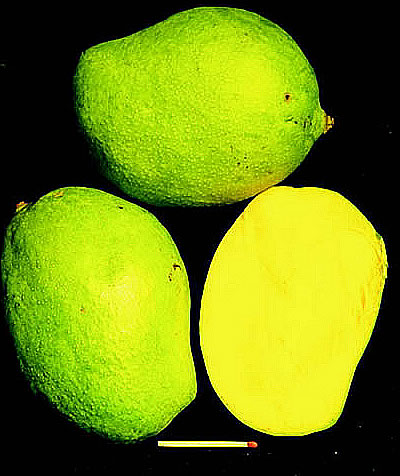
This chance seedling must have been grown along the Kenya coast for a long time. Very old and huge trees can be found spread around the Kilifi-Malindi-Lamu area. Its parentage is unknown.
The fruit is large and fairly oval and ripens from dark green to a light green and finally turns yellow. The rounded and obvious beak a pointed projection at the tip of a fruit faces downwards. The flesh is orange and juicy, the fibre content varies from little to much and there is usually a strong turpentine flavour. Lenticels are plenty, first green and later changing to brownish. The average dimensions are: length 11.6 cm by 9.9 cm in width, weight 453 g (range: 339–500 g). The seeds are polyembryonic mode for reproduction: contains more than one embryo; produces true-to-type progeny and the fruit may be classified as one of the best of the more common local cultivars.

The tree is very large and of a tall, upright growth with dense foliage and small leaves. It is an alternate bearer but produces a considerable crop in productive years. Fruits mature in January and February and show a very good resistance to anthracnose.
Advantages:
seed propagation possible (polyembryonic)
good resistance to anthracnose
travels well to the market
Disadvantages:
huge tree and therefore difficult to harvest
tendency towards biennial bearing
susceptible not resistant to powdery mildew